So, you’re seeking a tropical haven as your next place of work? As a digital nomad, there are a myriad of pros and cons that come with choosing to stay in Costa Rica!
Costa Rica is a triple threat of mesmerizing beaches, lush greenery, and bustling city life. Whether you’re planning to work against an urban or a rural backdrop, the country offers diverse options for scenery.
Costa Rica is well-known as a surfer’s paradise, with some of the world’s most breathtaking beaches, as well as an abundance of lush forest, bush, and park scenery. If you’re less intent on immersing yourself in nature, Costa Rica offers the busy city lifestyle too.
You can expect a tropical climate with year-round warm weather. Depending on your exact region, the temperatures tend to fall consistently between the low and high 20s.
For the foodies of the digital nomad community, Costa Rica also boasts a traditional cuisine, with classic Spanish dishes for many different tastes!
Although Costa Rica offers many advantages for remote workers, there are potential downsides to watch out for.
The cost of living is relatively higher than in neighboring countries of Central America. Although cost of living rates vary greatly according to location and lifestyle, most areas of Costa Rica aren’t so budget-friendly and may require more work to keep costs down.
Although crime rates are lower than in neighboring countries, they are relatively high when compared to the U.S. Costa Rica experiences higher levels of petty theft, property crime, drug trafficking, and organized crime, so vigilance is required in urban areas.
Internet facilities are not the strongest, as some areas of Costa Rice have little to no service available. Digital nomads in need of a strong Wi-fi connection must do their research on the different providers and may have to prioritize a more urban location.
Natural disaster risk is a concern, as Costa Rica is located in the Caribbean and situated directly on a faultline. This means there is a higher risk of tsunamis and tropical storms, as well as earthquakes and volcanic activity. 78% of their population reside in high-risk areas for multiple environmental hazards.
| Pros | Cons |
| Pleasant, warm weather year-round | Living cost is relatively higher than in other neighboring countries |
| Mesmerizing beaches | Crime rates are relatively higher than in the U.S. |
| Lush greenery | The internet facility is not the best in remote parts of Costa Rica. |
| Rural and urban lifestyles | Prone to the risk of tsunamis, earthquakes, tropical storms, and volcanic eruptions. |
| Diverse, traditional cuisine | |
| Diverse culture | |
| High happiness index ranking | |
| Nearby to the US / Canada |
Despite the myriad of pros and cons to consider, did you know that Costa Rica is Latin America’s happiest country? It is considered to be among the happiest countries in the world — placing 23rd, with a 6.58 on the happiness index.
Visa and Legal Requirements
Digital nomads can feel right at home with the most popular visa catered specifically to them: the Stay for Remote Workers Visa. However, there are several other options available, depending on your work and family situation:
Tourist Visa
For shorter stays (less than 90 days) a Tourist Visa is not required. If you’re traveling from the US, only proof of a return flight ticket is required. However, travelers are prohibited from employment during their stay, and remote work is unspecified.
Digital nomads would often perform “border runs” — leaving Costa Rica before the 90-day limit, only to return soon after to restart the tourist period.
Stay for Remote Workers and Service Providers Visa
The Stay for Remote Workers and Service Providers Visa – also known informally as the digital nomad visa – was created to avoid tourist visa limits for remote workers.
It requires a monthly income of above $3000 USD. This visa allows a one-year stay but is extendable.
Rentista Visa
The Rentista Visa is specifically for nomads with a steady stream of passive income. It requires proof of income over $2500 per month for at least two years. This entails a letter of commitment regarding your fixed income as a $60,000 deposit.
For non-independent travelers, the Rentista Visa is family-friendly. It is also longer than others, as it’s valid for up to two years but can be renewed for an additional two.
Inversionista Visa
The Inversionist Visa is for investors making a significant contribution to Costa Rica. This visa is valid for two years but may be renewed.
The required contribution must be an investment of at least 150,000 USD. According to a translation of the Inversionista visa: “the foreigner must demonstrate to Immigration a minimum investment of $150,000 in real estate, other real property, stocks, bonds, and productive projects or projects of national interest.”
These must be listed as approved in the Costa Rican government registry.
To apply for any of these visas, you must supply the required documents. These vary according to your chosen visa type, but often consist of:
- Application forms
- Cover letters
- Identity verification
- Proof of income
- Criminal record/background check
- Medical insurance certificates.
Depending on your case, other documents (such as fingerprinting and vaccination evidence) may also be required.
Legal considerations for working remotely in Costa Rica
Digital nomads must apply for a visa that allows them to work remotely during their stay.
If working as a freelancer, or for a foreign-based employer (anywhere outside of Costa Rica), you must obtain the correct visa for independent remote work.
Consulting with the nearest Costa Rican embassy is recommended to ensure that you are up to date with the current requirements, depending on your specific work situation. Failure to obtain the correct permit can lead to legal issues, such as fines or deportation.
Once your remote work visa is obtained, you must register as a taxpayer with the Costa Rican tax authorities. Paying your taxes regularly is crucial to avoid legal consequences, especially if you consider extending your stay.
Cost of Living in Costa Rica
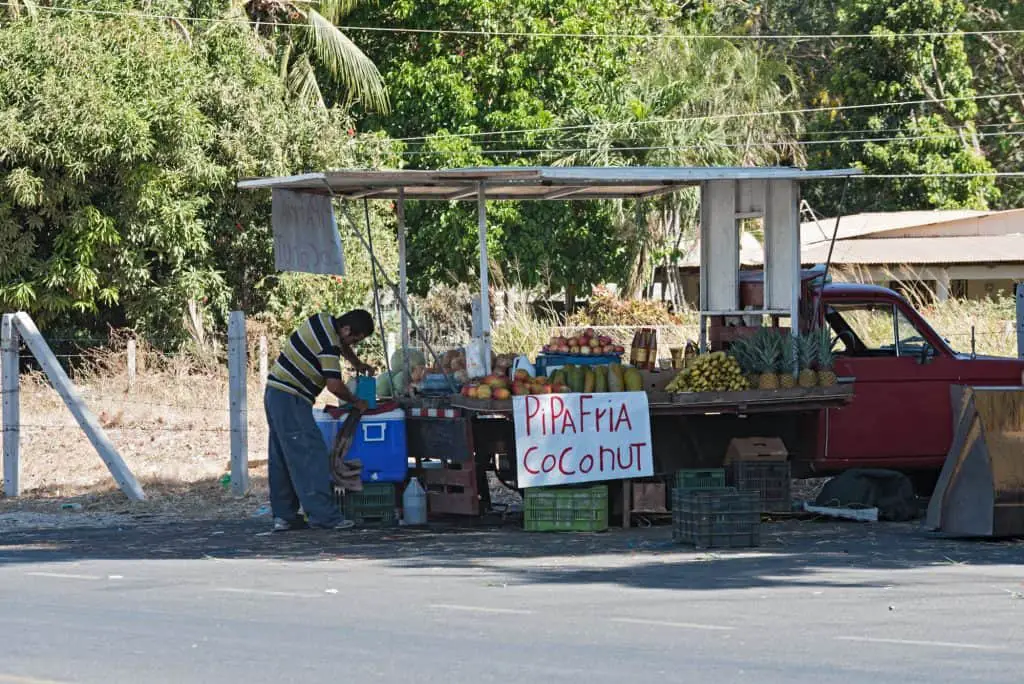
As mentioned earlier, Costa Rica does not fall among the destinations with a cheaper cost of living. As of mid-2023, it ranks 53rd out of 146 on the Worldwide Cost of Living index.
However, Costa Rica is a popular choice among digital nomads, expats, and tourists due to the many other advantages that the country has in store. Right from peaceful working environments, to a rich sense of outdoor serenity, Costa Rica may be worth every colon you spend.
The cost of living in Costa Rica varies from one nomad to another, depending on personal factors like accommodation, city, food, travel, etc. However, according to recent Numbeo statistics, here is a general estimation for the monthly cost of living in Costa Rica (USD):
- Accommodation (1 bedroom) – $447 – $612
- Fooding – $400
- Internet (unlimited) and Phone Bills – $70
- Electricity / Heating Utilities – $77.30
- Transportation (Taxi, bus, car rental) – $150
- Entertainment (Gym, drinks, nightlife, tours) – $250
However, remember that this is just a general estimation. Actual cost of living rates may vary hugely according to your personal decisions.
As accommodation varies the most, the estimated monthly cost of living for a single person, without rent, is $823. Your accommodation rates will vary depending upon factors like the city you live in, whether you are based centrally or outside the city center, and your personal standard of living.
Electricity bills will also vary greatly, as depending on your location, you may need to frequently use air conditioning. For example, if you choose to live on the coasts, you’ll likely be using an air conditioner throughout the day. This can cost you around $300 monthly on electricity for a small condo with a single AC.
Tips on saving money on living costs in Costa Rica
As of 2023, the average cost of living in Costa Rica is approximately $1500-$2000 per month.
There are several habits you can maintain to reduce the cost of living. During your stay, be sure to consider:
- Local produce markets for groceries
- Exploring affordable local eateries
- Cooking at home
- Public transportation, or walking when possible
- Being mindful of utility usage (electricity, water, etc)
Internet Facilities in Costa Rica
For digital nomads, the Internet is a must-have. Costa Rica, being a popular destination for remote work, has gradually improved in internet connectivity.
However, it can be quite difficult to get good internet connections in some parts of the country. The internet facilities in Costa Rica may be improving, but they still fall behind when compared to other neighboring countries.
Wi-Fi networks in Costa Rica operate on 2.4GHz (most commonly) and 5GHz frequency bands. Internet speed in Costa Rica is lower than in many developed countries, with an average speed of around 22 Mbps.
In the The Global Fixed Broadband Internet Speed, Costa Rica ranked 63 in the world according to Speedtest.
Public Wi-Fi is widely available but varies in speed, and security on unsecured networks may be an issue.
Urban areas, such as San Jose City, tend to have faster internet speeds than more remote areas. Some rural areas have very limited or even no coverage.
As an online worker, be sure to prioritize urban areas, or research your chosen location and compare the local internet service providers!
Additionally, if you’re renting an apartment in the country, make sure to inquire about the internet facility first. Some of the most popular internet providers in Costa Rica include Kolbi, Cable Tica, Tigo, and Claro.
There is a large range of options varying in speed and price; you can expect to spend around $25 – $60 per month, with higher prices reflecting faster internet speeds.
Kolbi is the main internet provider in the country with a monthly fee of around $50 for 50 Mbps.
For a more budget-friendly option, Claro offers economic packages of 10 Mbps for $30. Liberty offers 100 Mbps for $60. For some of the higher internet speeds available, Cabletica offers packages with speeds of up to 500 Mbps.
Some providers cater only to businesses, while others offer mobile connectivity only. Most providers offer packages that include TV, internet, and mobile. Some offer Internet via 1:1 International Fiber Optic and High-Speed Satellite Broadband Internet.
When selecting an internet package, be sure to consider speed, reliability, and security. Costa Rica offers a large range of internet providers, meaning you can find the right package according to your budget and priorities.
The following table outlines the average internet speeds recently found in different regions. Be aware that broadband and public Wi-fi options differ, and that most rates improve over time, so the below is only a rough guide.
| Location | Average Internet speed (Mbps) |
|---|---|
| San Jose | 30-35 Mbps |
| Limon | 15-25 Mbps |
| Puntarenas | 20 Mbps |
| Liberia | 10 Mbps |
| Puerto Viejo | 11 Mbps |
| Santa Teresa | 37 Mbps |
| Tamarindo | 10 Mbps |
The Weather in Costa Rica
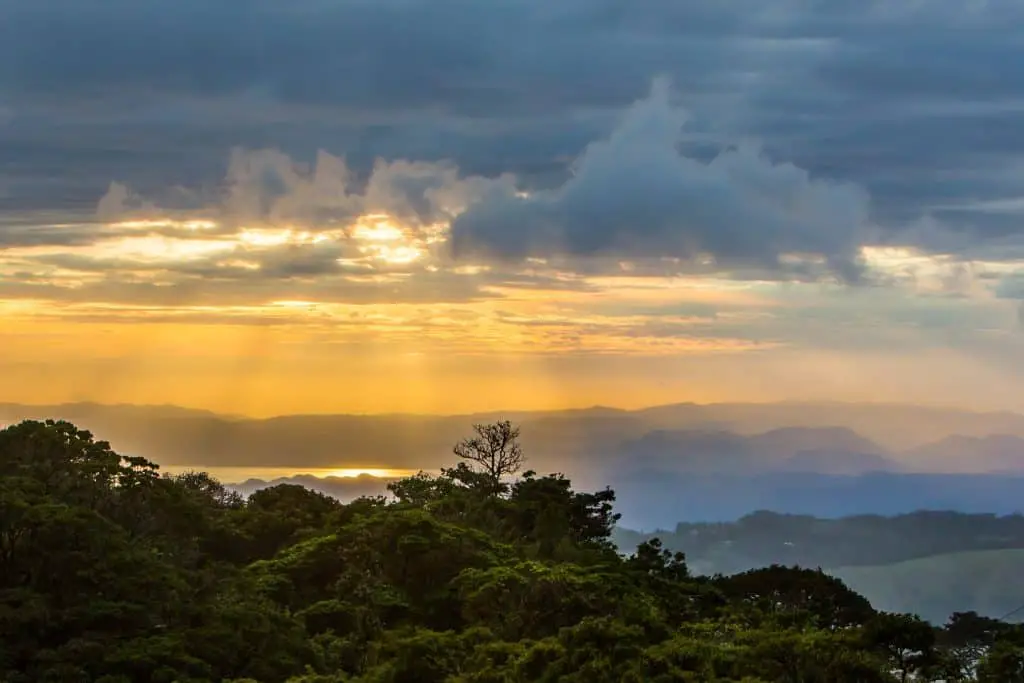
The pleasant weather of Costa Rica makes this country a popular choice among most digital nomads. Since Costa Rica lies quite close to the equator, the country has tropical weather without a true winter season.
Most digital nomads dwell in Costa Rica to escape the harsh winter of their own countries. Costa Rica’s climate is typically categorized into two seasons – dry season (high season) and a rainy season (green season).
Rainy season can adversely affect the electricity in the country. If your next stop is Costa Rica, we recommend visiting during the dry season. If you do not have a good battery backup and a router, you may fall behind in your work, or be available at unpredictable times.
Vibrant sunny days are frequent in most regions throughout the year. Some of the country is blessed with up to twelve hours of sunshine every day, while areas such as San Jose experience sunshine for around six to seven hours a day.
The sunniest months are between January and April. Because Costa Rica is close to the equator, the sun sets quickly and consistently — around 5 to 6 pm depending on the time of year.
Costa Rica lies between the magnificent Caribbean Sea and the Pacific Ocean, experiencing a tropical climate. Thus, location also plays an important role in the varying climatic conditions of different regions.
On the Pacific side, dry seasons are from December to April, while May to November experiences more rain. For instance, Tortuguero has more humid and wet weather conditions being closest to the Caribbean Sea.
On the other hand, the province of Guanacaste (which lies near the Pacific Ocean) experiences dry weather and is rich in tropical dry forests.
The following table outlines the average temperatures (°C) and average precipitation (mm) of some popular regions, according to the month.
| Location | Month | Average temperature (°C) | Average precipitation (mm) |
| San Jose | January February March April May June July August September October November December | 22 24 24 25 24 23 23 23 23 22 22 22 | 10 10 10 60 140 170 180 190 240 220 160 50 |
| Liberia | January February March April May June July August September October November December | 27 27 28 29 29 28 28 28 27 27 27 27 | 8 7 6 10 172 225 152 182 264 210 88 30 |
| Limon | January February March April May June July August September October November December | 24 25 24 26 25 26 25 26 26 25 25 25 | 270 220 190 180 240 310 290 250 120 160 270 310 |
| Puerto Viejo | January February March April May June July August September October November December | 23 23 25 25 24 24 24 24 24 23 23 23 | 137 86 78 66 145 187 238 163 100 133 155 193 |
| Santa Teresa | January February March April May June July August September October November December | 26 27 27 27 26 26 26 26 25 25 26 26 | 16 11 17 65 314 317 290 315 352 417 196 48 |
| Tamarindo | January February March April May June July August September October November December | 27 28 29 29 28 27 28 27 26 26 26 27 | 4 2 6 32 221 260 132 210 359 310 98 13 |
Finding Places to Stay in Costa Rica

Finding a place to stay in Costa Rica can seem like a challenge if you’re getting around the country for the first time. However, with a push in the right direction, it is not too difficult to find good accommodation. Here are some of the best places to choose from:
Best places in Costa Rica for digital nomads
San Jose
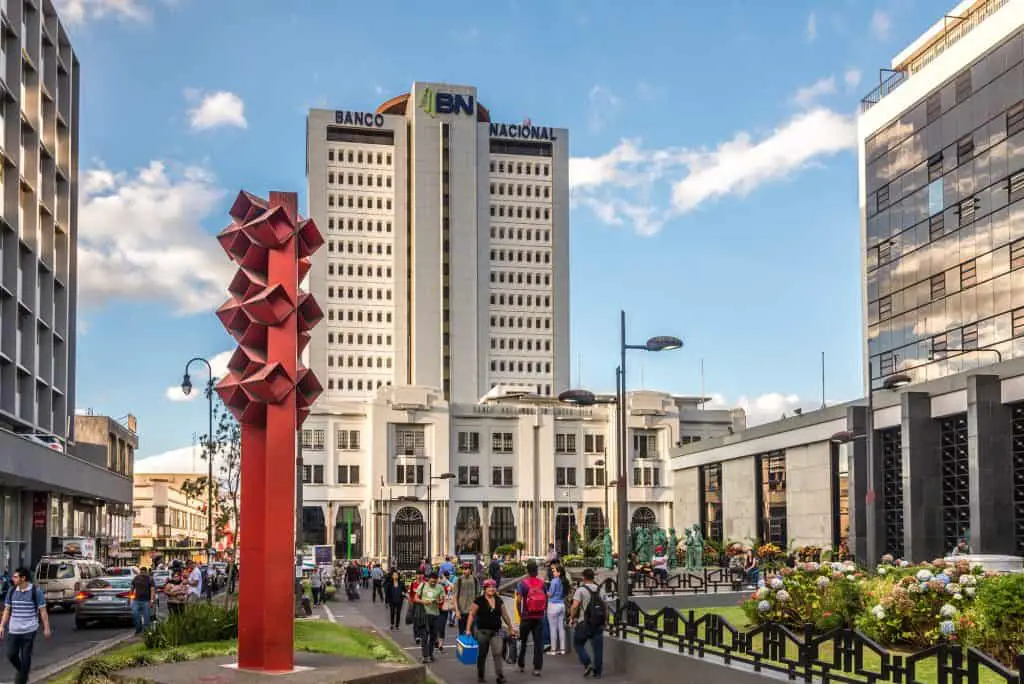
Here is the top destination for the city people! If you’re not a beach person, and want to stay among the city lights and bustle, your first choice would be the beautiful city of San Jose. If internet speed, worker communities, and moderately warm weather are on your list, look no further. Because the city is elevated, it experiences slightly cooler temperatures. It is not only the capital city of Costa Rica, but also the largest.
Puerto Viejo de Talamanca
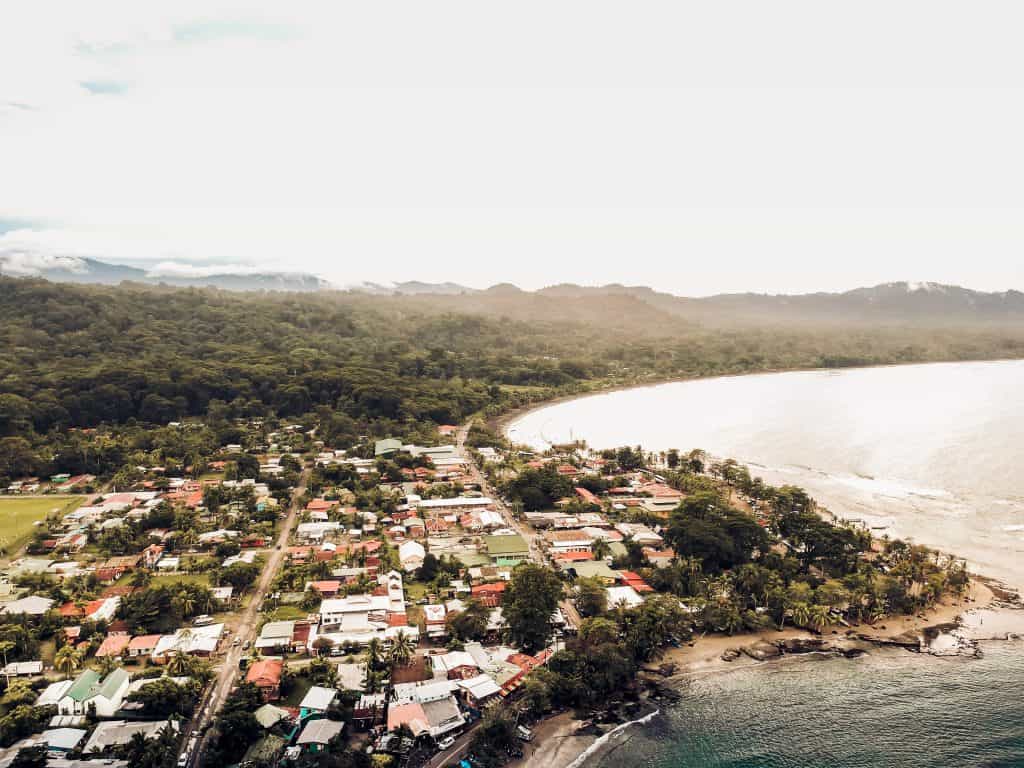
If you love beaches, Puerto Viejo de Talamanca can be your dream destination in Costa Rica. It is a beautiful little town situated near the Caribbean Sea, filled with plenty of white-sand beaches, wildlife, and a great nightlife. Thus, there is never a boring day in Puerto Viejo de Talamanca. Temperatures are highest in May, at around 24°C. This is also a great place to get away from the bustling cities, less extreme heat, and enjoy a more peaceful and laid-back environment amidst nature.
Samara

Samara is the ultimate destination for digital nomads who have a great interest in beaches, surfing, and yoga/wellbeing. It is around two hours away from the Liberia International Airport and is a great town to be in for a more budget-friendly lifestyle. The mean temperature in Samara is 26°C. If you’re a keen surfer or want to learn, and you prefer fewer tourists, Samara is your go-to.
Santa Teresa
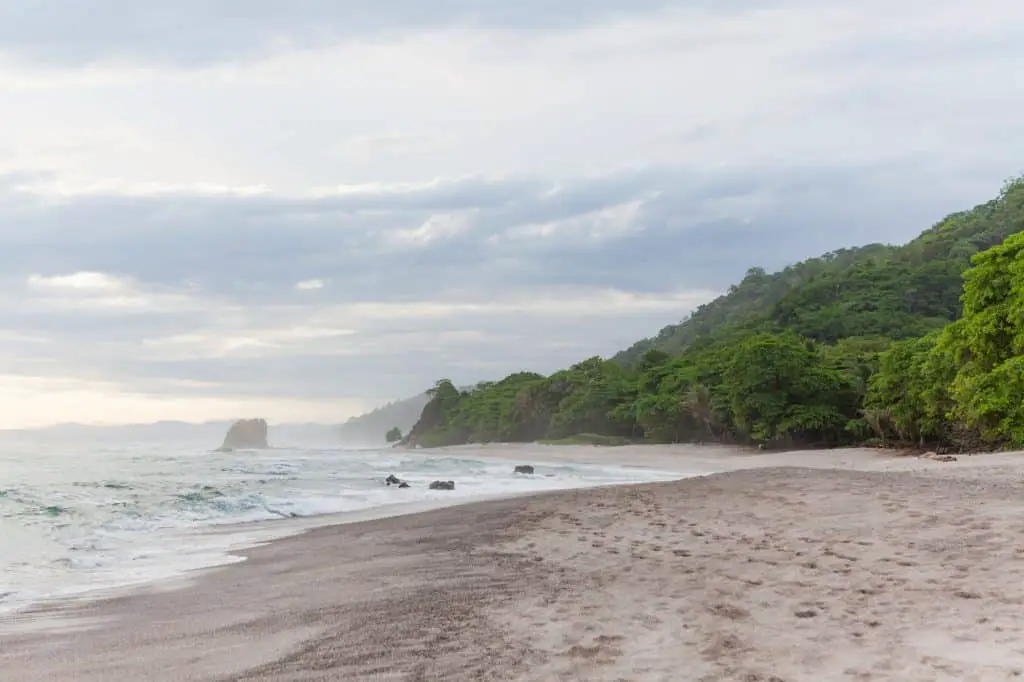
Santa Teresa is another distant beach town located in the Nicoya Peninsula, and similarly known as a surfer’s paradise. If you’re someone who wants to enjoy nature at its purest form, you’ll love the rural beach setting in Santa Teresa. There are many English speakers here, and often plenty of tourists. This is the perfect destination for workers wanting to be in a remote paradise, completely away from all the hassles of city life. As a result, public transport is not so easy, and the roads are much less maintained, so small cars are not recommended. Santa Teresa is also very far from the airport, at a 6-hour drive.
Tamarindo

You can call Tamarindo a destination for fit and vibrant digital nomads. It has tons of great attractions for backpackers and surfers. Thus, the town of Tamarindo is a popular choice among young expats and nomads. Similarly to San Teresa, it has higher tourist rates and lacks public transport. Because it is a smaller town, most locals however find it very walkable. Tamarindo has a relatively higher cost of living, and is easily among the hotter regions of Costa Rica, with an average temperature of 26-29°C year-round.
Ways to find a place in the country
Airbnb
Airbnb is the go-to for travelers finding accommodation in almost any country. Airbnb offers some of the best places in Costa Rica at reasonable prices. You can find great apartments and neighborhood buildings that offer temporary rentals to suit your needs.
Whether you want a small private condo or an entire two-bedroom apartment, Airbnb has many options under its belt. However, before renting places on Airbnb, make sure to check previous reviews, contact the owners directly, and do your research right.
There are many digital-nomad-friendly options on Airbnb. These are catered specifically to remote workers by, for example, including communal spaces, high-speed wifi, and quiet surroundings.
Nightly versus monthly rates vary, depending on current demand and tourist seasons. To get a better idea of digital-nomad-friendly options, here are some examples in Costa Rica:
- Asteria: Apartment for digital nomads or visitors
- Digital Nomad friendly and steps from the pool!
- San Jose Condo: The perfect Digital Nomad apartment!
- Remote Workers! Beach Studio with kitchen + Wi-fi 50mb.
Hostels
Hostels are not only the go-to for more budget-friendly accommodations but also a great way of meeting new people. Not all hostels in Costa Rica are available online. Thus, it’d be helpful if you could get around in the country by interacting with the locals to find one.
You can check sites like HostelWorld to see if there are any hostels open for reservations. If you’re someone who does not wish to share a room, great news for you, as hostels in Costa Rica also offer private rooms!
Where can you meet other digital nomads in Costa Rica?
If you want to find like-minded people in Costa Rica, there are plenty of ways to connect.
Whether you’re looking for a study buddy, a fellow swimmer and surfer, or a remote-work romance, the digital nomad community is diverse and thriving! There are many ways to meet other nomads during your stay:
Facebook groups & websites
Facebook hosts many groups for travelers new to Costa Rica. By typing in “Digital Nomads” or “Remote Workers” along with your specific region, you can request to join as many relevant groups as you’d like.
If you don’t use social media, there are plenty of other online resources dedicated to connecting travelers, such as Nomadlist.com/costa-rica and Meetup.com.
Co-working spaces
Co-working spaces such as Selina, Nest Coworking, and Outsite are all available in Costa Rica. These boast high-quality office spaces for all sorts of remote work. Different co-working spaces provide different amenities (such as cafes, pools, and office equipment), so each has its own set of pros depending on your line of work, as well as the desired size and location.
Beach towns
Surfer, swimmer, or sunbathing worker, the beach towns of Costa Rica host plenty of digital nomads intent on soaking up the sun. Some of the most popular beach towns for meeting other nomads include Tamarindo and Santa Teresa.
Communal spaces: hostels and guesthouses
When selecting accommodation in Costa Rica, you may want to consider more communal options where other nomads may reside. Hostels tend to operate as shared rooms, and some guesthouses include shared facilities or living areas.
Cafes and restaurants with Wi-Fi
Evidently, remote workers are more likely to be in cafes or restaurants hosting a wifi connection. If you’d like to meet other nomads during a meal (or bang out some work side-by-side), look out for the wifi symbol when selecting eateries.
Workation retreats and events
A workation retreat is a program/event designed especially for remote workers. The term “workation” refers to “work” and “vacation,” combined, reflecting the dual aspect of these retreats. They offer digital nomads a balance of work and play in a place away from their usual accommodation or workspace.
Diverse and Delicious Food in Costa Rica
The culinary scene is a star attraction of Costa Rica. Costa Rican cuisine is very diverse, with traditional local flavors available for all different tastes. Here is an outline of some of the most mouth-watering, must-have dishes during your stay:
Gallo Pinto (rice and beans)
Gallo pinto translates to “spotted rooster”, due to its speckled appearance when cooked. It is considered the national dish of Costa Rica. It consists of rice and black or red beans stir-fried together, and is often served with eggs for breakfast or brunch.
Casado (rice, beans, meat or fish, and plantains)
Casado translates to “married”, and is a traditional Costa Rican dish consisting of rice, beans, plantains, and a protein source such as chicken, beef, or fish.
Arroz con Pollo (rice with chicken)
Arroz con Pollo translates to “rice with chicken”, and is a traditional one-pot meal often including onion and saffron, as well as various other vegetables and grains.
Olla de Carne (beef stew)
Olla de Carne translates to “pot of beef”, and is a healthy beef and vegetable soup considered a go-to Costa Rican ‘comfort food’. It typically combines chunks of beef with carrots, acorn squash, sweet potato, chayote, and corn on the cob in a flavorful broth.
Sopa Negra (black bean soup)
Sopa Negra, translating to “black bean soup”, is a vegetarian soup made primarily with black beans and often seasoned with garlic, cilantro, onions and peppers. Like many traditional Costa Rican meals, it is typically served with a side of rice.
Chifrijo (a mix of rice, beans, pork, and pico de gallo salsa)
Chifrijo translates to “beans” and “fried pork”, and is a popular Costa Rican street food. It is a layered dish of beans, pork belly, and chimichurri, often served with tortilla chips or rice. Many versions incorporate the Pico de Gallo salsa sauce.
Costa Rica’s Endless Entertainment Options
Costa Rica boasts a plethora of entertainment options. Because of its rich nature and scenery, the country offers many budget-friendly or even free recreational activities.
For example: hiking, national parks, and beach trips for swimming and surfing are all free, unlimited, and often within easy walking distance.
Other activities may be less budget-friendly, but incredible forms of entertainment, such as ziplining, climbing, horseback riding, and safaris.
For guided exploration, Costa Rica offers various wildlife tours and nature day trips including sightseeing at volcanoes and waterfalls!
For the night owls of Costa Rica, the cities boast a vibrant nightlife. Most urban areas host various forms of live entertainment, such as live music, mariachi bands, jazz clubs, bars, and casinos.
How safe is Costa Rica for digital nomads?
Recent crime statistics indicate that Costa Rica is moderately safe, with a lower crime rate compared to other Central American countries. Compared to the U.S. however, homicide rates are significantly higher, with a record number of 753 murders this year. This equates to 17.54 murders per 100,000 inhabitants.
According to the Crime Index, the crime rate in Costa Rica is 4.99, ranking eighty-seventh worldwide. In terms of specific crimes, Costa Rica experiences higher levels of petty theft, property crime, drug trafficking, and organized crime.
This is attributed to the country’s growing wealth, as well as its location considered a transit point. The Costa Rican government is however taking measures to address the increasing crime rates, with assistance from the U.S.
Costa Rica is generally considered relatively safe and secure by travelers, and remains a highly popular destination for digital nomads.
The most urban regions — such as San Jose and Limon in particular — have however experienced recent increases in crime rates. To ensure a safe and secure stay, you may want to consider living in more remote areas and remaining vigilant.
Health and medical considerations
Costa Rica boasts excellent healthcare compared to the U.S. Their public healthcare system, although less developed, is highly affordable and accessible. There are several providers that offer medical insurance specifically for digital nomads during your stay.
Consider obtaining comprehensive health insurance that covers international medical services, as well as emergency evacuation services. If local healthcare can’t provide the necessary treatment, you will be transported to a facility that can.
Conclusion
Costa Rica is a tropical haven for digital nomads with its mesmerizing beaches, lush landscapes, and vibrant city life. With various options catered specifically to the digital nomad community — from visas and insurance to accommodation and amenities — you can’t help but feel welcomed as a remote worker.
The warm climate, traditional cuisine, and stunning scenery are all converging evidence for Costa Rica’s high happiness index ranking, as well as “work-ation” lifestyle.
However, the higher cost of living, urban crime rates, and potential for natural disasters are all concerns to be factored in.
The average cost of living in Costa Rica is approximately $1500-$2000 per month, but this varies hugely depending on region, accommodation, and other personal factors. Every digital nomad’s lifestyle will differ, so this should be calculated accordingly.
Remember that Wi-fi facilities are limited by area — varying in speed and coverage according to location and provider. As a remote worker, this might be crucial to figure out first.
Luckily, there are plenty of destinations to pick from depending on your work priorities and desired lifestyle. For busy city-goers, San Jose is a top pick, whilst swimmers and surfers might pick between Samara or Santa Teresa.
Other popular destinations include Puerto Viejo de Talamanca, Tamarindo, and Limon. No matter what you do as a digital nomad, you’re bound to find a suitable backdrop in Costa Rica!


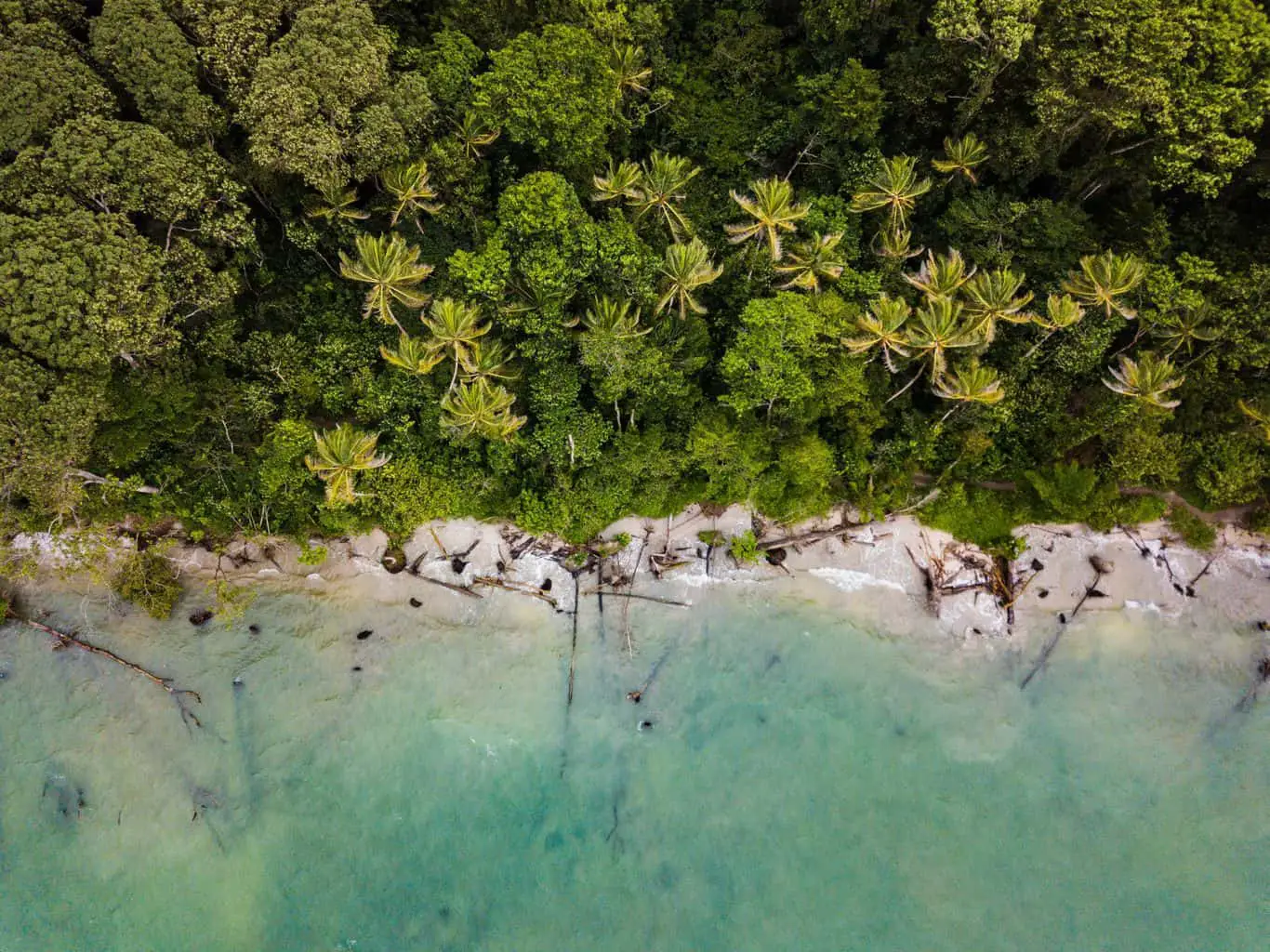


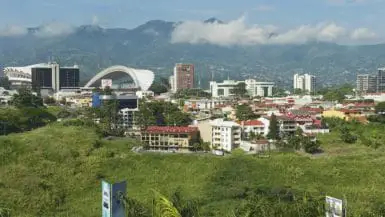
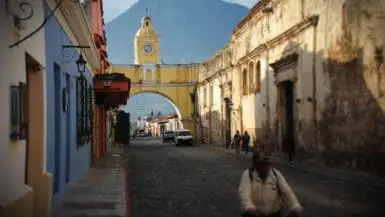
Leave a reply